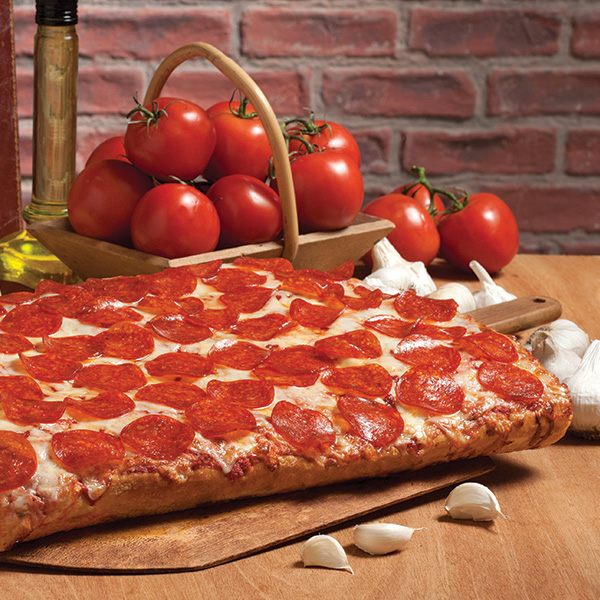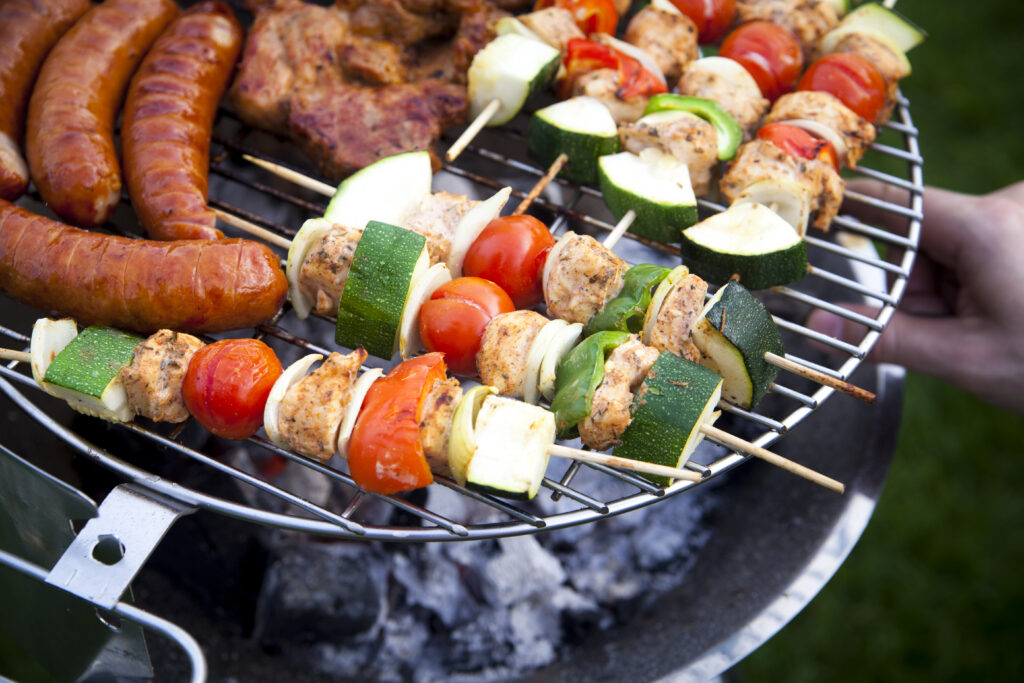
Grilling days are on the menu! We have some ideas you and your family will love, while you are loving eating more meals with your family. Warmer days also mean grilling outside can keep inside cool and comfortable.
Let’s check out this week’s meal planning items.
Sausage & Peppers:
1 pack Market 32 Sweet or Hot Italian Sausage
1 bag Mini Peppers
1 bag (2lbs.) Sweet Vidalia Onions
1 pack PICS Hotdog Buns
1 container Market 32 Deli Salads (Buy one get one FREE)
Shop for Sausage & Peppers here!
Meal 1: Sausage & Peppers
Sausage and Peppers is a versatile meal that can be prepped and cooked in different ways. Check out these hacks and tips!
Essentials:
2 clean cutting boards
1 Chef Knife
BBQ grill skillet or BBQ grill sheet
Pantry:
PICS Olive Oil or PICS Vegetable Oil Spray
Grill the sweet or hot Market 32 Italian Sausage on the grill, and sizzle colorful mini peppers sliced into strips, and sweet Vidalia onions sliced in whole, thin rings in a grill-friendly pan with some PICS Olive Oil (in the seasonal and grilling displays in the store!). The sausage, topped with sizzled peppers and onions, fits perfectly on a PICS Hot Dog Bun, with the fresh Market 32 Deli Pasta Salad rounding out your plate!
Try our these Sausage & Pepper Kabobs!
Essentials:
Good Cook Bamboo Skewers
Simply Done Napkins
Meat thermometer
BBQ corn holders
Measuring cups
TBSP measure
Tongs
Good Cook basting brushes
Pantry:
PICS Vegetable Oil Spray
PICS Sugar
PICS Kosher Salt
Accent seasoning
PICS White Vinegar
PICS Unsalted Butter
Soak skewers in water for 15 minutes while you prep the sausage and veggies. Slice each sausage into 3 pieces. Slice the mini peppers into two halves and the Vidalia onion into chunks. Thread the veggies on the skewers with a pepper half on each side of the chunk of onion and on each side of the piece of sausage. Grill on low, turning to ensure the sausage and vegetables cook through. Serve the kabob in PICS Hot Dog Bun, and remove the skewer, leaving the sausage and vegetables on the bun.
Meal 2: Finger-Licking Good Grilled Chicken Drumsticks, Sweet Corn, and Market 32 Potato Salad
This meal is a breeze and sure to please! Almost no prep and easy clean up – everything cooks on the grill, making it the summer version of a “1-pan” meal.
Hack – Soak corn in 3 cups cool water with a dash of salt and tsp of sugar for about 10 minutes. This helps the kernels stay tender while you grill them up. Brining the chicken legs ensures they are moist and juicy – see the recipe for that here:
Light sodium brine: for 12 – 18 chicken drumsticks.
10 cups water
¼ cup PICS sugar
¼ cup PICS White Vinegar
2 TBSP Accent + 1 TBSP Kosher Salt OR 3 TBSP Kosher Salt
Place brine in a large pot or container. Add the chicken drumsticks, move the pot to the refrigerator and allow to soak for about 20 minutes. When ready to cook, remove from the pot and shake to remove excess brine. Discard the used brine. Place chicken in a foil tray or platter to transport to the grill, and set up a clean platter for the cooked chicken and corn.
A quick spray of PICS Vegetable Oil on the chicken legs and the corn will minimize food sticking to the hot grill.
Cook the chicken over a medium hot fire, turning every few minutes to brown evenly and cook to internal temperature of 165 degrees. The corn and chicken are well-matched for the grill – both will take about 20 minutes to cook. Corn will gradually caramelize, lightly browning. Consider using separate tongs. At the 15 -minute mark, brush on the Sweet Baby Rays Hot Sauce for the adventurous eaters in your family! Turn the chicken legs one more time to caramelize the sauce. Serve with Market 32 Potato Salad, and a pile of Simply Done Napkins!
Family Meals Movement burst
Did you know – more family meals help children learn social skills and support better mental health? A fun conversation starter for May – who has the most flowers in their yard on your street? Did you see any birds or bunnies today?

Mia Teal
Marketing Coordinator, Paid Media
We’re proud to partner with some of the best hot dog and sausage makers that call our region home. Many of our local partners are family businesses that have been open for decades, some even over a century! These fine meats, made only with the best ingredients, give our customers tasteful options year-round.
White Eagle: Schenectady, NY
White Eagle is a long-time local partner hailing from our hometown Schenectady! Caroline Bardwell launched this storefront in 2019 and eventually created an e-commerce website. Bardwell continues to connect the producer with the consumer all while supporting the local economy.
Sindoni’s Sausage: Altamont, NY
The Sindoni family opened their Italian Sausage business in 1920 in Schenectady, NY. In 2015, 95 years later, the business relocated to Altamont, NY. The new building is eight times larger than the previous one, which is much needed considering the business produces 5,000 to 9,000 pounds of sausage per week! With the fifth generation of Sindonis now working for the family business, Sindoni’s Sausage is due to keep expanding. They are open for business Monday through Thursday until noon.

Hofmann Sausage Co: Syracuse, NY
Hofmann Sausage Co. originated in Germany before making its way to Syracuse, New York. Now on its 143rd year of business, this company proudly serves high quality products including hot dogs, sausages, beef jerky, hunter sticks, and condiments year round!
Bilinski Sausage: Cohoes, NY
Stacie Waters is the CEO and Owner of Bilinski Sausage. After Waters graduated from Cornell University with a Bachelor of Science Degree, she came back to the Capital Region to advance the family business which specializes in chicken sausage. With Waters’ leadership, the business developed into only using chickens without antibiotics as well as non-GMO ingredients. Waters visits with all the chicken suppliers to ensure that the chickens are being raised properly. The way animals are treated and what her customers are consuming are extremely important to her!
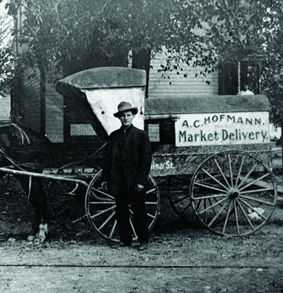
McKenzie’s Country Classics: Burlington, VT
John and Nellie McKenzie immigrated to Vermont in 1898 and developed their own farm. When Nellie began giving country hams as holiday gifts, word got out about the heavenly taste. The McKenzies never turned back. Today, McKenzie’s belief is, “Be good, do good, and bring good to as many people as we can.” This is why you will find only the finest meats and cheeses at McKenzie’s with no antibiotics or added growth hormones. They take pride in producing healthy, wholesome goods.

Martin Rosol’s: New Britain, CT
Martin Rosol opened his business in 1928 which took place in a converted garage with eight employees. The number of employees expanded as the business advanced with some working here for over 50 years! In addition to their store front, Martin Rosol’s also has an online store where you can find delicious kielbasa, sausage, frankfurters, and cold cuts. Martin Rosol’s manufacturers are famous for their “foot long” frankfurters! Check them out!
Chicopee Provision Co, Inc: MA
Chicopee Provision Co, Inc. has been open for almost 100 years! Not only have they been credited with manufacturing the world’s largest kielbasa, which was 600 pounds, they also take pride in their other delicious products. These include hot dogs, hot and sweet sausages, baked loaves, and more. There is quite a history with this business. The founders faced severe setbacks throughout the years. Flooding from the Connecticut River caused incredible damage to the plant and inventory in 1936, 1938, and 1955. During World War II, the plant almost closed due to the lack of beef and pork. While the war lasted five years, the company withstood these challenges and continued to be a favorite many years later.

Dino’s Sausage: Utica, NY
Originating in 1969, Dino’s Sausage began as an Italian deli before developing into a wholesale provider. Dino’s has gained a reputation over the years for providing superior meats as well as having a delivery service you can count on! Some of their products include Italian sausage, ground port, stick or sliced pepperoni, boneless chicken breast, portioned steak, and much more!
Dietz & Watson: Philadelphia, PA
Dietz and Watson a family-owned business, began in 1939. Their mission is, “To provide the best meat and cheese products on the market by adhering to our guiding principles: choice, quality, transparency, and family.” In addition to fine meats and cheeses, Dietz & Watson has a variety of snacks and condiments that are the perfect pairing for any meal. You can also find recipes on their website that fit all different needs. These include: gluten free, low sodium, keto, game day, vegetarian, and more.

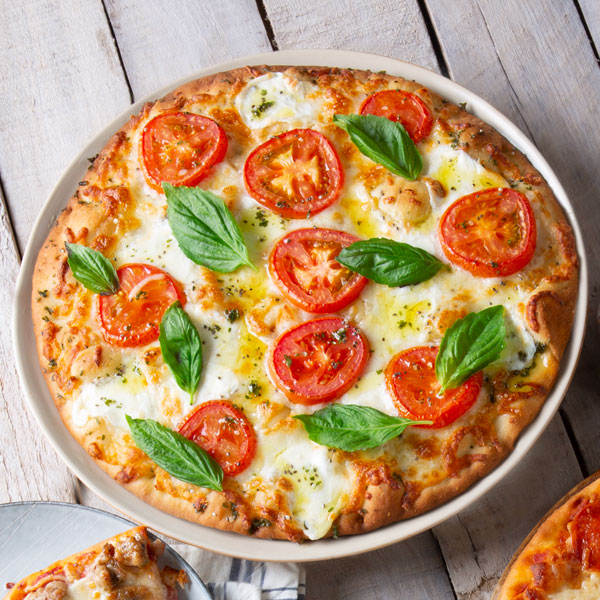
Mia Teal
Marketing Coordinator, Paid Media
Who doesn’t love pizza? It’s the ultimate comfort food, the versatile canvas of flavors, and the centerpiece of gatherings and celebrations. And what better way to honor this beloved culinary creation than by dedicating a whole day to it? That’s right, National Pizza Party Day is here to remind us to indulge in cheesy, saucy goodness with friends and family.
Corner to Corner Pizza
Our crispy pan pizzas are covered with the finest, freshest toppings from corner to corner, generously layered on top of our 100% natural whole milk mozzarella cheese, and pizza sauce, made from vine ripened tomatoes. Our pizza is baked fresh in 500° ovens for an authentic old world taste with our signature crispy bottom. Our pizza is thicker than a New York style, yet thinner than a Chicago style pizza. We use 100% natural whole milk mozzarella and only the freshest toppings. Choose from one of our regular or specialty pizzas, or create your own. Made fresh to order.
Our specialty Corner to Corner Pizzas options are:
- Italian Supreme
- Gourmet Chicken Supreme
- Meat Lovers
- Margherita
- Buffalo Chicken
- Hawaiian Islander
If you are looking for a fun pizza-night with the family, try making some of our favorite homemade pizzas below!
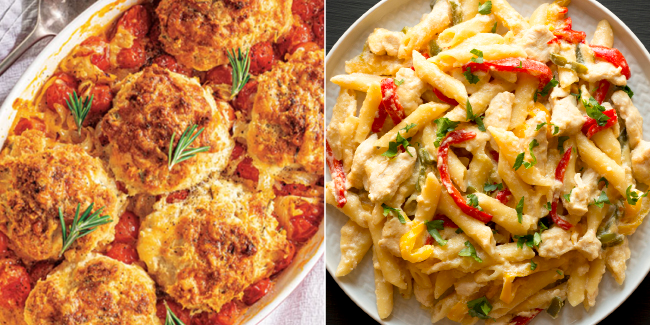
This week’s meal ideas are very exciting, and something much different than previous weeks. Today, we will dive into two delightful dishes that will transform your mealtime routine. Whether you’re seeking the comforting warmth of a classic dish with a twist or the vibrant zest of Mexican-inspired flavors, we’ve got you covered. Let’s check out this week’s meal ingredients, shall we?
Mediterranean Tomato and Scallop Cobbler
Two Full Circle Organic Grape Tomatoes
1 bag Market 32 Bay Scallops
1 Onion
1 Container PICS Biscuits (found in the dairy & eggs section)
1 can (24oz) PICS Diced Tomatoes
Shop for Mediterranean Tomato and Scallop Cobbler here!
Chicken Fajita Pasta
1 box PICS Pasta
1 lb. Market 32 Marinated Chicken Breasts
1 package Fajita Seasoning
1 bag PICS Frozen Fajita Peppers and Onions
1 bag PICS Shredded Cheese
Shop for Chicken Fajita Pasta here!
Meal 1: Mediterranean Tomato and Scallop Cobbler
This veggie-forward skillet bake brings the flavors of the Mediterranean together in one pan for a savory, satisfying casserole with a comfort food twist.
Essentials:
Chef knife
Cutting board OR food processor
Large oven-safe skillet (not cast iron)
Can opener
Wooden spoon
Small bowl
TBSP and TSP measure
Pantry:
1-2 TBSP chopped fresh thyme, or, 2 – 3 TBSP dried thyme;
3 – 5 TBSP unsalted butter, (olive oil can be used to replace some or all the butter in the casserole, but not on the biscuits.)
1 – 2 TBSP chopped fresh or dried garlic
¼ tsp cayenne pepper
1 TSP brown sugar, packed;
2 TSP whole grain mustard
Wash grape tomatoes and allow them to dry on a clean towel. They can be sliced in half or whole for this dish.
Note – M32 Faroe Islands Bay Scallops can be added frozen or defrosted in the refrigerator overnight and drained before adding to the cobbler.
Preheat oven to 350 degrees.
Melt 2 TBSP butter in the small bowl and combine with the 2 tsp whole grain mustard. Set aside
Chop 1 medium onion. Open can of PICS Italian Seasoned Diced Canned Tomatoes
Place skillet on the stovetop and add 1-2 TBSP butter or olive oil. When oil is warm, add onion and sauté for several minutes. Add garlic and 1 TBSP of fresh thyme, or 1.5 TBSP dried thyme. Simmer on low and stir occasionally for about 1 minute, until onion is lightly browned.
Add grape tomatoes and stir, allowing them to soften for 2-3 minutes. Add canned tomatoes, stirring to combine. Allow some of the liquid to cook off to concentrate flavors. Open the PICS Biscuits container.
Add the brown sugar and stir to combine.
If defrosted, drain the bag of M32 Bay Scallops, then spoon them into the tomato mixture in the skillet.
Top the tomato and scallop mixture with the PICS Biscuits. Brush the tops of the biscuits with the butter- mustard mix, and sprinkle remaining thyme on top of them.
Place the skillet in the oven, following the cooking directions for the biscuits, approximately 25 minutes, or until the biscuits are a golden brown. Remove the skillet from the oven and serve the cobbler with a fresh salad side. A Dole Chopped Salad or Ceasar would add complementary crunchy texture and flavor to this easy Mediterranean meal!
Adapted from:
Tomato Cobbler – ‘Garden to Table’ – Saving Room for Dessert (savingdessert.com), accessed 5/2/2024
Meal 2: Chicken Fajita Pasta
This is a true one pot meal, with a magic milk and cheese hack that will bring everyone to the table.
Essentials:
5 Cups PICS Milk
Large 4 – 6-quart saucepan (pasta pot)
Chef knife and cutting board
Wooden spoon
Tongs
Pantry:
PICS Olive or Vegetable Oil
Place 2-3 TBSP oil in the saucepan, and heat on high. Carefully place the sliced chicken pieces in the pot and sauté until done. Remove from the pot and keep warm on a plate.
Place 1 TBSP oil in the saucepan, and add the frozen peppers and onions, stirring until they are cooked and lightly browned. Turn the heat down to medium.
Place 4 cups of PICS Pasta (we like penne, gemelli or shells for this meal) into the pot with the vegetables, add the 5 cups of milk, and Fajita seasoning package. Bring the milk to a simmer. As the pasta cooks, the sauce becomes creamy. Add the cup of cheese and cooked fajita chicken to the pot and combine with the rest of the ingredients. Serve it up and enjoy!
Adapted from:
One-Pot Chicken Fajita Pasta Recipe by Tasty, accessed 5/2/2024

Haleigh Eustis
Intern, Digital Marketing
May is here, which means nice weather is on its way! What’s better than an iced cold margarita in the summer? What about tequila and lime . . . in cheese form? I know what you’re thinking, tequila and cheddar cheese? But trust me, this delectable combo is equally delicious as it is unique! Henning’s Tequila Lime Cheddar Cheese is a creamy cheese with the bite and tang of a zesty lime, finished with the warmth of tequila.
Henning’s Tequila Lime Cheddar Cheese is the perfect cheese on its own or paired with crackers for a midday snack. Enjoy this cheese with a tangy flavor burst of pomegranate seeds, or with an assortment of cured meats. If you’re looking to sip something with this uniquely flavored cheese, try out a Belgian ale or Chardonnay and enjoy!
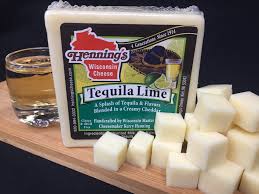
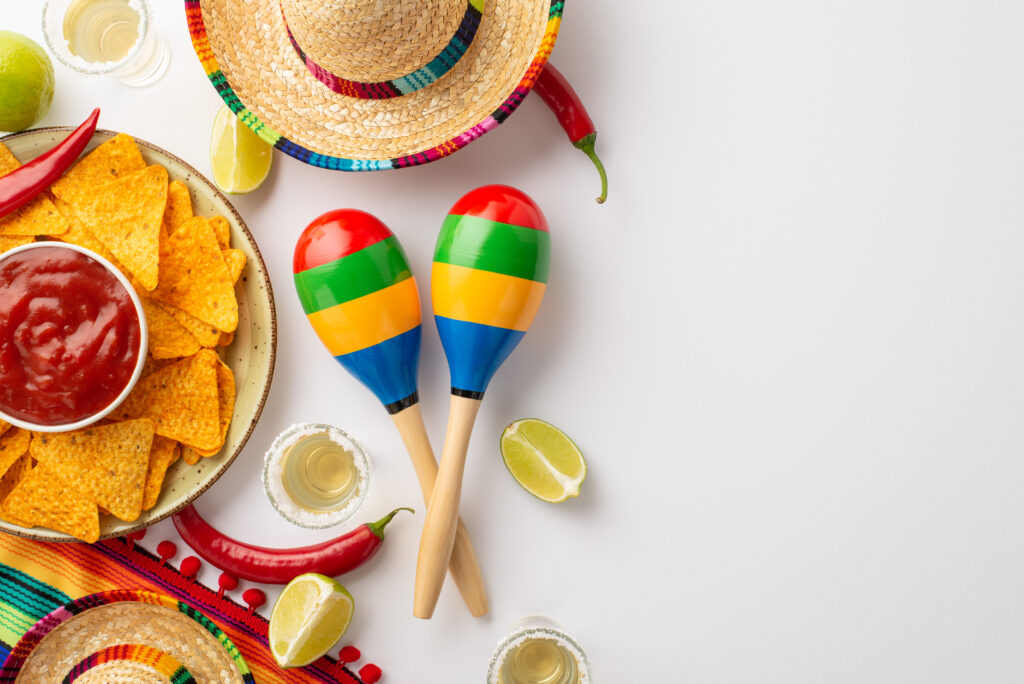
Mia Teal
Marketing Coordinator, Paid Media
Get ready for a Cinco de Mayo celebration that’s fun, flavorful, and perfect for sharing with friends! As the 5th of May rolls around, it’s time to enjoy some tasty Mexican-inspired treats and celebrate the culture, history, and traditions of Mexico. Check out some of our delicious recipes below!
Navajo Tacos: A classic taco recipe with a bit of a twist. Dinners roll are used in the place of a tortilla, evenly topped with your favorite taco ingredients. Count us in!
Super Guacamole: Our Super Guacamole is simple to make while featuring all of the enhancements necessary for the ultimate guac dish. After all, we call it “Super” for a reason!
Mexican Street Corn: Mexican Street Corn adds a refreshing, extra flavorful option to your rotation. Easy to make and versatile, if you don’t want it off the cob try it as a salad.
Mexican Shrimp Cocktail: What would Cinco De Mayo be without a cocktail? We recommend our Mexican Shrimp Cocktail. From shrimp, to avocados and hot sauce it’s got everything you need to celebrate the right way!
Breakfast Enchiladas: These cheesy enchiladas will become a fan favorite in your household!
Check out our Cinco de Mayo recipes & everything you need for ingredients!
Happy Cinco De Mayo!

“The phrase ’working mother’ is redundant.” — Jane Sellman
Being a mother is an exquisitely wonderful and enormously challenging family role. There is a quote on a meme somewhere that frames the unending efforts Moms put into their children’s lives as akin to being an air traffic controller – always working to set the best course for each child, for present and future and every day in between. They organize and plan like the CEOs of major companies but can pivot and reprioritize in the moment when their children need them. We see you, Mom, and we value you for all your efforts to nourish our growth, wellbeing, and success throughout our lives. For all these reasons and more, we want to be sure we can help your family show you how much they value all your efforts with some special meals for this most special day.
Our team worked hard bringing these ideas together, knowing our “value treatment” includes ensuring your family can make these meals taste and look wonderful. Check out the plan and tips that bring it all together and can be done by experienced and not-very experienced cooks. We hope you and your family enjoy these special treats and that your entire Mother’s Day is filled with delicious food, hugs, and smiles. Let’s check out what we have planned for you!
Eggs Benedict:
1 pack Thomas English Muffins
1/2 lb. Market 32 Off the Bone Ham
1 container PICS Hollandaise Sauce
18 pack PICS Eggs
Shop for Eggs Benedict here!
Surf & Turf
1 1/2 lbs. Butcher’s Promise Top Sirloin Steak
1 lb. Market 32 Farm Raised Raw Shrimp
1 package Pero Farms Green Beans
Shop Surf & Turf here!
Meal 1: Eggs Benedict
Starting Mom’s Day in a very special way!
Eggs Benedict is a “big deal” meal for many, a classic brunch beauty that is saved for special days and savored for how it transforms humble ingredients into a culinary celebration. Our step-by-step recipe makes it easy to bring it home without having to bring the chef!
The key to success is preparation: the muffin, ham and extras like fresh fruit are done first, then the sauce, and finally the eggs. We have laid it out here to ensure you can whisk it right to Mom while warm and wonderful!
Essentials:
At least two sturdy, microwave safe coffee mugs (one clean cup per each egg cooked)
1 medium sauté pan (optional if you will sauté the Market32 ham before assembling the egg, muffin and sauce)
1 small saucepan
1 small whisk or a spoon to stir and serve the PICS Hollandaise sauce,
Measuring cups
Slotted spoon (that will fit into the mugs to remove the poached eggs)
Small plate or Simply Done plastic wrap,
Oven safe plate
Simply Done Aluminum Foil
Butter knife
Tablespoon
Pantry:
PICS Vegetable Oil Spray
Butter (room temperature for easy spreading)
Ready…..
Preheat oven to the lowest setting, “Warm” or 200 degrees F.
Make the coffee or set up the mimosa bar. Set up the number of serving plates needed for your family near the stove or cooking area. If you are serving fresh fruit with the Eggs Benedict, portion that out on the plates.
Split the English Muffins and set them by the toaster. Each person should have both halves of the muffin as the base and will have a poached egg on each one. Smaller children may only need one half.
Place eggs by the microwave, with the mugs. Measure ½ -3/4 cup of water and place in each mug.
Set…..
Place Market 32 Off the Bone ham slices on a plate. Cut each slice in half – this ensures you can fit the ham on the muffin and its a flat surface that will keep the egg in place. Optional prep: Spray the sauté pan with PICS Vegetable Spray, set on low heat on a burner. Briefly brown the ham slices to warm and add flavor. You can hold the ham and toasted, buttered muffins on the oven-safe plate in the oven while cooking the other ingredients.
Start toasting the English muffins. Older children can help and can butter them when ready. Place the toasted, buttered muffins next to the ham on the plate in the oven. Cover the plate lightly with foil. They can also set up the mugs with the ¾ cup of water near the microwave. Younger children can put napkins on the table. Move the plates for the finished muffins to the other side of the microwave.
Go! Crunch time! You cook the sauce and poach the eggs at the same time. Mom should be at the table, (perhaps escorted there by your helpers) with her beverage, enjoying the show (and the knowledge that she isn’t cleaning up either. 😊)
Hollandaise sauce – follow directions on the package for the PICS Hollandaise Sauce, whisking in the small saucepan. When it is almost done, take the plate with warm ham and muffins out, and set near the stove so you can poach eggs and assemble the Eggs Benedict quickly and easily.
Microwave poached eggs – super easy, and easy clean up!
These steps are quick – have each plate ready with the warm muffin and ham set up and ready to place each poached egg and two tablespoons of sauce.
Place one microwave-safe coffee mug with water in the microwave. Microwave the mug/water on high for 45 seconds. Water should be steaming but not boiling. Crack the egg into the hot water. Place a small clean plate on the mug (or cover with cling wrap). Return to the microwave and cook for 45 seconds. Due to the different levels of power in microwaves, plan on experimenting with the first egg. SAFETY TIP – sometimes eggs explode when the plate or wrap are removed – keep your face away from the top of the cup during this step for each egg. Children may want to “see”; consider having them already at the table, or waiting at the kitchen door to ensure you can prep and finish safely. Check the egg for desired doneness – whites should be completely cooked, and the yolk should be tender and gooey. If it is not quite ready, return the mug to the microwave for 10 seconds, and/or leave the plate on the cup for 10 more seconds. Use the slotted spoon to lift the eggs out and drain the water at the same time. Place the poached egg on the ham, and top with warm Hollandaise. So special! Enjoy!
Meal 2: Surf & Turf
Surf and Turf – a great way to end a special day!
This fantastic dinner is simple but delivers all the special you want to put into Mom’s day. The top sirloin steak on sale can be subbed for the ribeye in this recipe, with a couple of tips to ensure it is tender and awesome! Marinate with Italian dressing, and broil to seal in the juices and tenderness. Slice it thin and consider topping with some garlic butter for an unctuous extra touch. Prepare the fresh green beans in a shallow, wide saucepan – steam or boil until they are tender, and top with butter for a wonderful side. The parmesan Market 32 shrimp are the crowning glory for this amazing entrée!
Check out our Ribeye Steak with Parmesean Shrimp!
Extra! Extra!
Dressed up Dessert – Market 32 Cheesecake slices with berries/sliced fresh fruit, or the Market 32 Fresh Chocolate Dipped fruit are both winners for a great family meal honoring that most important guest. Check out our cheesecakes here!
Happy Mother’s Day!
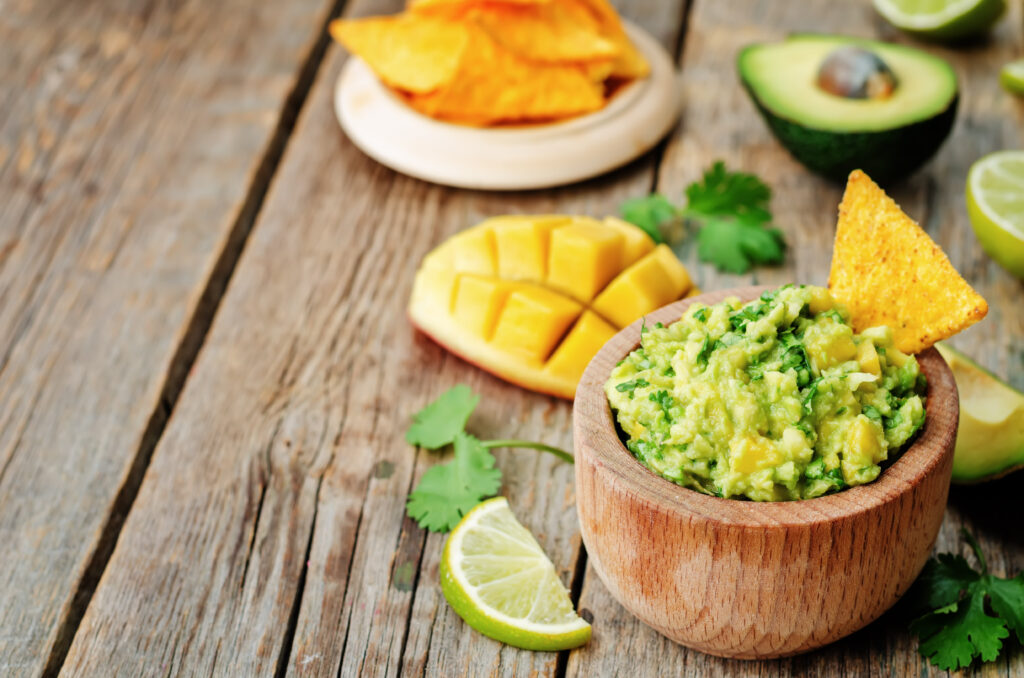
Haleigh Eustis
Intern, Digital Marketing
Warm weather is on its way! The season of picnics, parties and get-togethers is right around the corner. Wide arrays of dishes, that somehow always taste better in the warm weather, are making their yearly debut and without a doubt there will be a generous selection of delicious dips and chips.
Looking to impress everyone at your upcoming spring picnic? Look no further! Price Chopper/Market 32 has got you covered this spring season with our delicious “Super Guacamole.” Enjoy the delectable creaminess of fresh avocados, accompanied by the crisp bite of red onion and lime and the juicy burst of red tomatoes. Explore the various other flavors within our guacamole recipe for a flavor explosion in every bite!
Looking to spruce up your guacamole dish? Don’t be afraid to dress up your delicious dip with various toppings or add-ons! Mango, pineapple, peaches, pomegranate seeds, feta cheese and black beans can all act as a fascinating way to adjust your guacamole for a unique experience each time you make this dip.
Take on the warm weather with a delicious guacamole for every occasion. Shop all ingredients at Price Chopper/Market 32!
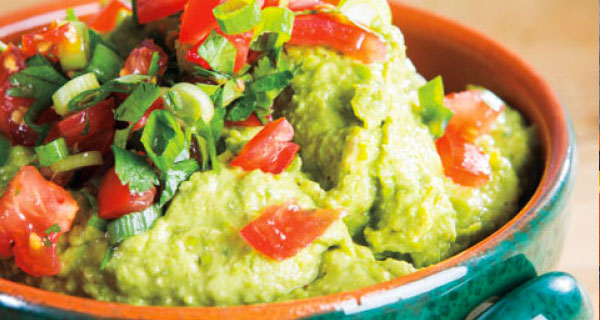
Super Guacamole: Click Here!
Roasted Guacamole: Click Here!
Grilled Corn & Tomato Guacamole: Click Here!

Celebrate Special Occasions with Floral
Haleigh Eustis
Digital Marketing Intern
It’s graduation season! As students step into this exhilarating phase of their lives, brimming with anticipation and excitement, the festivities and celebrations are in full swing. Amidst the whirlwind of planning, you may be asking one question: How do we decorate for this memorable occasion? Not to worry, because Price Chopper/Market 32 is at your service!
Elevate your graduation festivities with the timeless elegance of fresh flowers. Just like the graduates themselves, flowers symbolize growth and new beginnings. They infuse any setting with charm and grace, whether adorning a centerpiece or standing alone as a heartfelt gift.
Choose from our exquisite selection, each bouquet telling its own story. From the charm of ruby red roses to the vibrant and stunning color of a Crazy Daisy Bunch or the serene beauty of a Peace Lily, there’s a bloom to suit every graduate’s personality.
Short on time? No worries! Explore our wide array of flowers and bouquets conveniently available on Price Chopper Market 32 Floral DoorDash, ensuring effortless decoration for your celebration.
Let Price Chopper/Market 32 alleviate the stress of graduation season, ensuring every moment is filled with joy. Here’s to the graduating class of 2024, congratulations!

We Are Hiring! Join Our Winning Team!
Mia Teal
Marketing Coordinator, Paid Media
Are you interested in a new career but are unsure of where to begin? Stop what you are doing and check out this article! At Price Chopper and Market 32, we are looking for exceptional new members to join our winning team! With more than 130 stores, we have positions available for part-time and full-time employment. Our Capital District New York stores are hosting four upcoming job fairs; February 27th, March 19th, April 9th, & April 30th. Stop by the store for an on the spot interview and begin you career with us! Take a look at the list below to find a store hosting the job fair.
You may be wondering why you should work for us or what we have to offer, and the answer is that we have SO much to offer! Some benefits include tuition reimbursement, a 401k plan, a teammate wellness program, flexible scheduling options, room for career growth, and more! We also celebrate diversity, equity, inclusion, new ideas, and creativity within our company.
Still on the fence about applying for a job with us? See some of the incredible teammates below who you would be working with. Not only do these teammates go above and beyond for our customers, but they are outstanding leaders and role models for their fellow co-workers. We are honored to have them on our team!
In addtion to the stores at the end of this blog, we are beyond excited to announce the grand reopenings of two previous Shop Rite locations that will be turning into Market 32s. The Niskayuna location (store 191) will be the hiring location for the Nott Street Store. Hudson Valley (store 181) will be the hiring location for the North Greenbush store. The dates and times are as follows:
Begins Monday, February 25th through the end of May.
Monday- 9am-5pm
Tuesday- 9am-5pm
Wednesday- 9am-5pm
Thursday- 11am-7pm
Friday- 9am-5pm
Saturday 9am-3pm
Julian Carden
Wilton Market 32
Julz Carden has been with the company since July of 2023. She has a bubbly and easy-going personality and is always willing to help out in difficult situations. She loves interacting with customers and engaging in small talk with them to create a more personal shopping experience. In fact, she has certain guests that look for her specifically to cash out their groceries. Two things Julz likes about this company are the growth opportunities that we have to offer and how you can be anything you want to be as long as you keep your mind open and are working toward that goal.

Jarrett Dyer
Guilderland Market 32
Jarrett started as a part time produce clerk in Altamont Ave. In September of 2022, he became the Assistant Team Lead in Guilderland. From there, he became a temporary produce manager in August of 2022. He just continues to grow as a person and a manager!
When discussing his career at Price Chopper/Market 32, Jarrett stated, “I love what I do everyday and I like a challenge. I take pride in my work and enjoy making the department look amazing!”

Marilez MacDormand
Altamont Avenue Market 32
Marilez M. is our bakery rockstar at Altamont Ave. Marilez has been with Market 32 for seven years. The team loves to work with her because she always comes to work with a positive attitude and she is ready to work together every day. Marilez is a friend to everyone around her, especially the our guests. Customers love that she is so helpful and knowledgeable and describe her as having the “sweetest smile.” Her favorite part of her day is knowing the customers are leaving happy and looking forward to seeing her again.
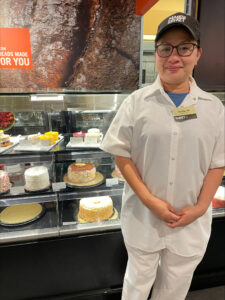
Bill Rademacher
Glenmont Market 32
Bill has been with the company for 19 years and has worked in a few of the Albany stores over the years. He is such a friendly individual who is always ready to work and loves to be helpful. Bill was recently featured in an award presented to Glenmont, known as the ARC NY (A Respectful Commitment). Bill is shown below!

Henry Pipino
Clifton Park Plaza Market 32
Henry started his journey with Market 32 on January 1st, 2023. He was a regular here for lunch and one day ended up talking with our hiring manager who hired him on the spot! He landed in the seafood department where he’s learned the ins and outs and great customer service. A few things Henry loves are the customers, teammates, cleanliness and the convenience of the store being local to his home. He is one of our hardest workers and even picks up shifts in Deli, Produce and Meat Department when he has some extra time to help on his days off. Henry has aspirations of becoming a manager in the seafood department, and with his work ethic he will make it there in no time. He is a great teammate and someone who the team can rely on if we ever need anything. Co-Manager Nick Larose states, “Since I became the Co-Manager here at Market 32 store #250, Henry and I have become great friends and talk regularly whenever we see each other. He is a stellar teammate who has never missed a day and is always in a great mood when he comes in, which rubs off on the rest of the team to make a great work environment.”

Dominic Collar
Johnstown Price Chopper
Dominic has been working with us since April of 2019. He first started in Produce and has since moved into the Grocery department doing various jobs. Dom is the type of person who can always put a smile on your face and customers look for him daily. He worked for us back in 1975 as a part time cashier and left to pursue another career, but found his way back to us, he says “he wished he never left”.

Aubrey King
Glenville Market 32
Aubrey King is a Sales and Service Team Leader in #38 Glenville and has been with Price Chopper/ Market 32 for 20 years. The thing Aubrey enjoys most about working at Price Chopper is the relationships that she has developed with her fellow teammates and customers. Part of Aubrey’s job currently as Sales and Service Leader (SSL) is to hire new talent for the store and she is the welcoming face for all new teammates. Aubrey loves training new teammates and making them feel welcomed in their new roles.
We are very lucky to have Aubrey working in this building- Aubrey’s catch phrase for the whole store is, “Shine Bright Like a Diamond” and Aubrey sure does just that!

Misty Parkis
Glenville Market 32
Misty Parkis is a part time food service teammate in #38 Glenville. Misty has been with the company for 5 years. Misty says that she enjoys working for the company and says that working with the right team and supportive management you can thrive and grow as a person and employee. When Misty is not at work, she enjoys spending time with her 2 children and husband.
Misty is an asset to this store, and a bright and shining light. Customers and teammates love her and her positive attitude.

Take a look at the list below for participating job fair dates & stores.
February 27th & March 19th
Participating Stores:
001 Eastern Parkway (Schenectady)
028 Hamilton Square (Guilderland)
175 Altamont Ave (Schenectady)
183 Guilderland
191 Niskayuna
224 Colonie
003 Brunswick
036 Cohoes
038 Glenville
039 Wilton
094 Mechanicville
112 Clifton Park Shoppers World
138 Market Bistro (Latham)
158 Route 50 (Saratoga)
184 Malta
245 Watervliet
023 Madison Ave (Albany)
250 Clifton Park Plaza
45 Delaware Ave (Albany)
111 East Greenbush
133 Westgate (Albany)
159 – Bethlehem
181 – Hudson Valley Plaza
188 – Albany-Shaker Road
196 – Glenmont
April 9th & April 30th
Participating Stores:
001 Eastern Parkway (Schenectady)
028 Hamilton Square (Guilderland)
175 Altamont Ave
183 Guilderland
191 Niskayuna
224 Colonie
003 Brunswick
036 Cohoes
038 Glenville
039 Wilton
040 Glen St. (Queensbury)
094 Mechanicville
158 Route 50 (Saratoga)
112 Clifton Park Shoppers World
138 Market Bistro (Latham)
157 Granville
170 Lake George Village
245 Watervliet
247 Lake George-Warrensburg
249 Fort Edward
250 Clifton Park Plaza
023 Madison Ave (Albany)
045 Delaware Ave (Albany)
111 East Greenbush
133 Westgate
159 Bethlehem
181 Hudson Valley Plaza
188 Albany-Shaker Road
196 Glenmont


